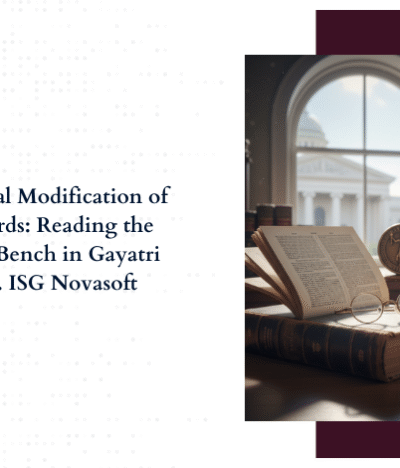How to transfer property from father-in-law to son-in-law? In India, the property transfer from a father-in-law to a son-in-law involves specific legal processes and considerations to ensure the transaction is valid and binding. The methods to transfer property from father-in-law to son-in-law can include a sale deed, gift deed or will. Each method requires compliance with the Registration Act and the Transfer of Property Act to ensure the transfer is valid and recognized by law.
When considering property transfer from father-in-law to son-in-law, it is important to understand the legal implications of such a transaction. A gift deed, for instance, involves transferring ownership without monetary consideration and must be registered to be effective. Alternatively, a will can be used to bequeath property, which takes effect upon the death of the father-in-law, each approach has its benefits and drawbacks.
How to Transfer Property from Father-in-Law to Son-in-Law in India
A property transfer from a father-in-law to a son-in-law in India involves navigating a series of legal steps and documentation. Key considerations include understanding the legal framework, gathering necessary documents, drafting transfer deeds, paying stamp duty and registration fees, obtaining family consent if applicable, and ultimately completing the transfer process.
1. Transfer Through a Gift Deed
Transferring property through a gift deed involves transferring ownership without any monetary exchange. This method ensures the son-in-law becomes the authorized owner of the property.
1.1. Drafting the Gift Deed
The father-in-law must prepare a gift deed to transfer ownership of the property to his son-in-law. The gift deed should include details such as the property’s description, the donor’s name (father-in-law), the donee’s name (son-in-law), and any conditions or considerations if applicable.
1.2. Acceptance by the Donee
The son-in-law must accept the gift while the father-in-law is alive.
1.3. Stamp Duty and Registration
Stamp duty must be paid on the gift deed according to the prevailing rates in the state where the property is situated. Afterward, the gift deed must be registered at the Sub-Registrar’s office within the property’s jurisdiction.
In Delhi, stamp duty and transfer duty are set at 4% of the circle rate for female donees, 6% for male donees and 5% for joint possession.
1.4. Documents Required
- Drafted Gift Deed
- Identity Proof
- Property Documents
- Encumbrance Certificate
- No Objection Certificate (if applicable)
- Proof of Payment of Stamp Duty
2. Transfer Through a Sale Deed
Transferring property through a sale deed involves a formal transaction where ownership is exchanged for a specified price, ensuring the son-in-law becomes the new owner of the property.
2.1. Agreement to Sell
Before drafting the sale deed, the father-in-law and son-in-law must agree on the sale price, property description and any additional terms of the sale. This agreement outlines the foundational terms for the property transfer process. The son-in-law must pay the agreed-upon sale price to the father-in-law either before or at the time of signing the sale deed.
2.2. Drafting the Sale Deed
A sale deed is a legal document that transfers ownership of the property from the seller (father-in-law) to the buyer (son-in-law). It should include details such as the names and addresses of the parties involved, the property description, the sale price and any other relevant terms and conditions.
2.3. Execution and Signing
Once the sale deed is drafted, both the father-in-law and son-in-law must sign it in the presence of at least two witnesses. The witnesses must also sign the deed.
2.4. Stamp Duty and Registration
Stamp duty must be paid on the sale deed according to the prevailing rates in the state where the property is located. The sale deed must then be registered with the Sub-Registrar having jurisdiction over the area where the property is situated. Both the seller and the buyer must be present along with two witnesses for the registration process.
2.5. Mutation of Property
The son-in-law should ensure that the property records are updated to reflect him as the new owner. This may involve notifying the local municipal authorities to ensure the change in ownership.
3. Transfer Through a Will
Transferring property through a will ensures the son-in-law inherits the property according to the father-in-law’s wishes upon his death.
3.1. Drafting the Will
The father-in-law must draft a will that clearly states his intention to transfer the property to his son-in-law. The will should include details such as the property’s description, the name of the beneficiary (son-in-law), and any specific conditions or instructions regarding the transfer. While the registration of a will is not mandatory, it is advisable to register it to avoid any disputes in the future. Registration can be done at the Sub-Registrar’s office.
3.2. Declaration of Title Suit
This suit seeks a judicial declaration that the son-in-law is the rightful owner of the property, as transferred by the father-in-law. The court examines the validity of the transfer documents and ensures that all legal formalities, including payment of stamp duty and registration, have been duly completed. The court after examining the validity, if satisfied grants the confirmation of the son-in-law’s ownership.
3.3. Probate (If Required)
In some states, obtaining probate (a legal document issued by the court confirming the validity of the will) may be necessary before the property can be transferred to the son-in-law. Also, in some cases, if the property is situated in another city, the probate becomes necessary to be executed in the city where the will is being executed. Probate confirms the validity and authenticity of the will. This court process involves submitting the original will along with a petition for probate to the relevant probate court. The court then verifies the legitimacy of the will, ensuring that it was executed in accordance with legal requirements.
3.4. Mutation of Property
The son-in-law must apply for the mutation of the property in the local municipal or revenue office to update the property records.
3.5. Required Documents
- Drafted Will
- Death Certificate
- Identity Proofs
- Witnesses’ Identity Proofs
- Executor’s Identity Proof
- Property Documents
- Legal Heir Certificate
- Succession Certificate
- Any Other Relevant Documents
Common Challenges of Transferring Property from Father-in-Law to Son-in-Law
A property transfer from a father-in-law to a son-in-law in India can present a variety of challenges such as:
Navigating Legal Documentation
A significant challenge lies in handling the comprehensive legal documentation required for a property transfer from father-in-law to son-in-law. Each transfer method, whether through a gift deed, sale deed, or will, involves distinct legal requirements. These include accurately drafting documents, securing witness signatures, paying applicable stamp duties and ensuring proper registration with relevant authorities. Any misunderstanding or failure to meet these requirements can result in delays or legal complications.
Family Disputes and Required Consents
Family dynamics can complicate the property transfer process. Disputes or disagreements among family members, particularly other heirs or beneficiaries, can lead to delays, legal challenges or even litigation. Obtaining consent from all relevant parties, including other legal heirs, may be necessary, especially if there are potential claims on the property.
Issues with Property Title
Ensuring a clear and marketable title to the property is crucial for a smooth transfer. Property title disputes, encumbrances, liens or other legal issues can complicate the transfer process and may need to be resolved before the transfer can proceed. Conducting thorough due diligence to verify the title and address any existing issues is essential to prevent future disputes.
Risk of Fraud and Misrepresentation
Fraud or misrepresentation can be a risk, especially in transactions involving significant assets. Both the donor and the donee should exercise caution and verify the authenticity of documents, the identities of the parties involved and the legality of the transaction to prevent fraud or undue influence.
Conclusion
A property transfer from a father-in-law to a son-in-law in India involves navigating a complex legal landscape with various methods such as gift deeds, sale deeds, or wills. Each method has its own set of procedures and considerations, from drafting the necessary documents to paying stamp duty and registration fees. Challenges such as legal documentation, family disputes, title issues, and fraud risks can arise during the transfer process, requiring careful attention and diligence to ensure a smooth and legally sound transaction
Explore Expert Guidance on Property Transfer Today
Given the intricate legal framework surrounding property transfers in India, it’s crucial for individuals to recognize the complexities involved and seek expert legal guidance. ACM Legal offers specialized services tailored to navigating property transfer needs with precision and confidence. Whether it’s drafting intricate documents or ensuring compliance with regulatory requirements, our experienced team provides invaluable support throughout the process.
FAQs
1. How to transfer property from a father-in-law to a son-in-law in India?
To transfer property from a father-in-law to a son-in-law in India, the parties can use a sale deed, gift deed, or will. For a sale deed, both parties must agree on the terms, draft the deed, pay the requisite stamp duty, and register it with the local Sub-Registrar. For a gift deed, the property is transferred without monetary exchange, but it must be executed on stamp paper, attested by witnesses, and registered. If transferring via will, the father-in-law must clearly mention the son-in-law as the beneficiary.
2. What are the conditions under which a father-in-law can legally transfer property to his son-in-law in India?
A father-in-law can legally transfer property to his son-in-law under conditions stipulated in a sale deed, gift deed, or will. The transfer must comply with legal formalities such as drafting appropriate documents, obtaining necessary approvals, paying applicable stamp duty, and registering the transfer with the relevant authorities.
3. What documents are essential for transferring property from a father-in-law to a son-in-law?
The essential documents for transferring property from a father-in-law to a son-in-law include:
- Drafted Gift Deed, Sale Deed or Will
- Proof of Identity (for both parties)
- Property Documents
- Encumbrance Certificate
- No Objection Certificate (if applicable)
- Proof of Payment of Stamp Duty
4. How long does the property transfer process take from a father-in-law to a son-in-law?
The duration of the property transfer from a father-in-law to a son-in-law can vary based on several factors, including the method of transfer (gift deed, sale deed, or will), the efficiency of local administrative processes, and any potential legal or procedural complications. Generally, the process can take from a few weeks to several months to complete.
5. Can a father-in-law revoke the transfer of property after it has been completed?
Once the property transfer from a father-in-law to a son-in-law has been completed through a legally valid method such as a gift deed, it cannot be revoked by the father-in-law. Once ownership is transferred, it becomes the legal property of the son-in-law, and the father-in-law no longer retains any rights over it. However, in exceptional circumstances, such as fraud or coercion, the transfer may be challenged in court.






